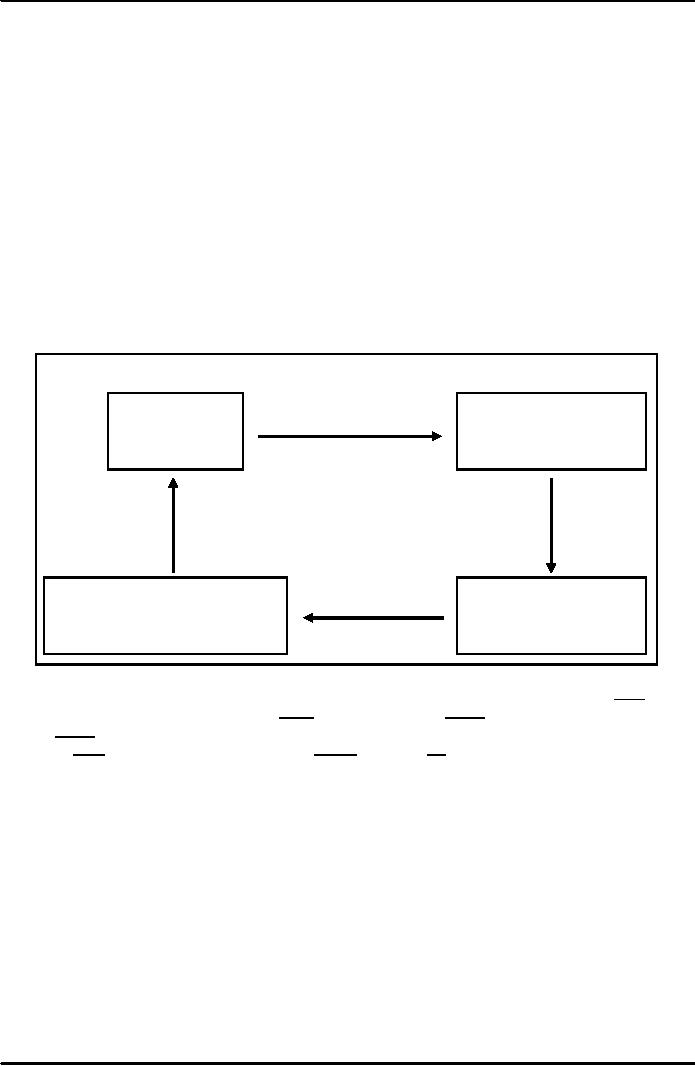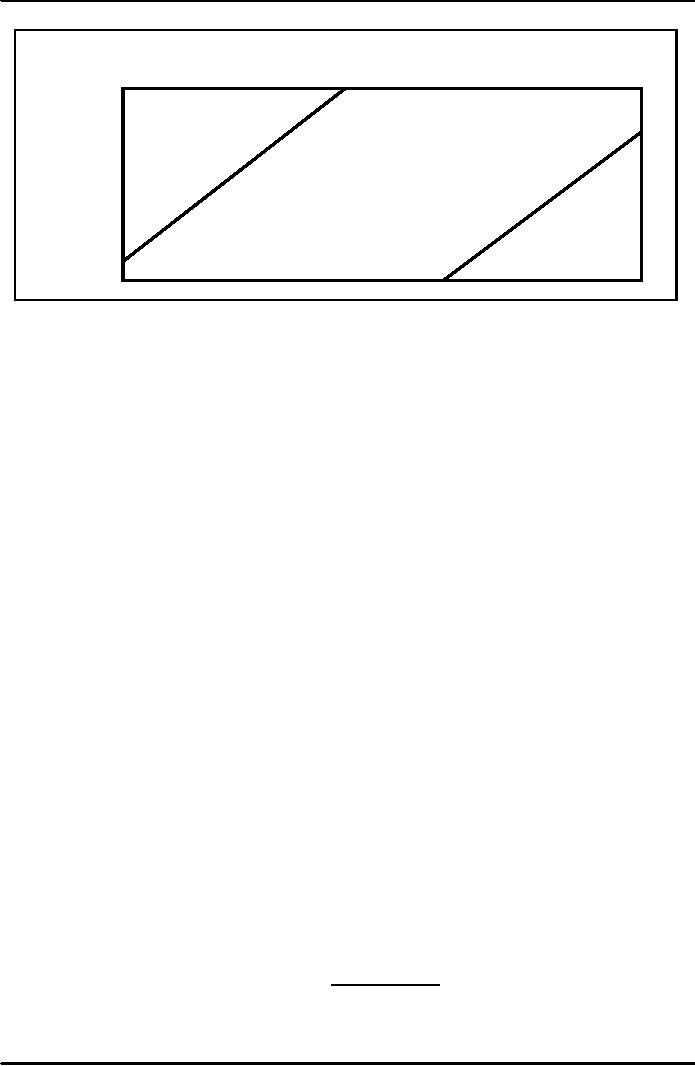 |

Introduction
To Public
AdministrationMGT111
VU
LESSON
32
MOTIVATION
At the
end of the lectures students should be
able to
-
Understand the concept of
motivation
-
Understand
what motivates employees
-
Theories
of motivation
In
organizations as we know, material,
machines and people work to
achieve given goals.
Machines
are
used by people and unless people in
organization do not use machines,
equipment etc the goals cannot
be
achieved.
People
matter a lot in organization situation; and
for management it is essential to
keep them
happy,
satisfied and motivated. What is
motivation. In very simple terms,
motivation means to `move', in
a
direction.
Motivation is goal directed
behaviour.
Figure
1
Model
of Motivation
Drive
Need
(Tensions
of drivers to
(Deprivation)
fulfill
a need)
Satisfaction
Action
(Reduction
of the drive and
(Goal
Directed
Satisfaction
of the Original
Behaviour)
The
above figure is a simple
diagram that illustrates
that motivation originates
from need. When
human
beings are deprived of something a
need emerges. This need
drives person to fulfill
need. The drive
leads
to action and when a person
meets his/her need a person
is satisfied. For example a
person is thirsty.
So
there is need to satisfy
thirst, which drive or moves
person to act i.e. reach
out to water. Once a
person
drinks
water (goal oriented behaviour)
he/she is satisfied. Then another
need may emerge. This is a
simple
example.
Motivation can be of variety of kinds,
People want to work in organization to
have authority, and
people
may want to serve other
people. People work for
money etc.
Motivation
is a human psychological characteristic
that contributes to a person's degree
of
commitment.
It includes factors that: cause,
channel, and sustain human
behavior in a particular committed
direction.
Motivation
and motivating both deal
with the range of conscious
human behavior
somewhere
between
two extremes, which
are;
1.
Reflex
actions, such as a sneeze or
flutter of the eyelids;
and
2.
Learned
habits, such as brushing one's teeth or
handwriting style. This
range of behavior is
shown
in Figure 2.
114

Introduction
To Public
AdministrationMGT111
VU
Figure
2
HUMAN
BEHAVIOR
Reflex
Focus
of
Influenceable
Motivation
Theory
Habit
Psychologist
has studied human behaviour
and has tried to experiment
that how people should be
motivated.
They divide human behaviour
in 3 broad areas i.e. (1)
reflex action like heart
beat, (2) habits
that
are
acquired and are difficult
to change. There is third area of
human behaviour that is influenceable and
it
is
this area on which psychologist
worked to modify human action.
Motivation is one of the aspects
of
human
behaviour on which psychologist
have worked and found
that people can be motivated to
achieve
organizational
goals. How that can be done
we will examine it
Importance
Understanding
human behaviour in general
and in organizations is important
because it helps in
handling
variety of situations. It helps in
dealing with people according to
their personality. Every
individual
is
different and therefore, should be
motivated differently. Once we
know the personality and also
know the
strengths
and weakness it becomes
easier to control the behaviour in
organization. For mangers it is
important
to know how to motivate people
and what motivates people.
Assumptions
about Motivation
There
are certain assumptions about
motivation and these
assumptions help managers to
devise
good
motivation plan. These
are:
1.
Motivation
is commonly assumed to be a good
thing.
2.
Motivation
is one of several factors
that go into a person's
performance. Important,
too,
are
such factors as ability,
resources, and conditions under
which one performs. There
are
number
of other things required for motivation
to work. For example a
student who wants
`A'
grade in his examination has to be a
motivated student. But his
motivation alone will
not
work. He has to get books to
read, he needs a place where
he can study, food to
keep
him/her
nourished etc.
3.
Managers
and researchers alike assume
that motivation is in short supply and in
need of
periodic
replenishment. Sometimes we feel motivated,
other times we are not
motivated.
So
in that situation we need to
motivate people.
4.
Motivation
is a tool with which
managers can arrange job
relationships in organizations.
They
can tailor job assignments
and rewards to what makes
these people "tick." Or
motivate.
Because people have different
personalities and aptitude for
work, the managers
should
assign job according to
aptitude.
Early
Views
As
you may recall, motivation
was one of the earliest
concepts which managers and
researchers
studied.
A classical model is often associated
with Frederick Taylor and scientific
management. According
to
this model, the most efficient way to
perform repetitive tasks was
determined and workers
were
motivated
with a system of wage
incentives i.e., output of
work was linked to
wage.
115

Introduction
To Public
AdministrationMGT111
VU
Human
relations model is associated with Elton
Mayo and his contemporaries.
Mayo and other
human
relations researchers found that the
boredom and repetitiveness of many
tasks actually
reduced
motivation,
while social contacts helped
create and sustain
motivation. So according to them in order
to
motivate
people's relationship with supervisions
should be good. Bosses or supervisors should
encourage
subordinates
to perform and give desired
results.
Under
the traditional model, workers had
been expected to accept
management's authority in
return
for high wages. Under the
human relations model, workers were
expected to accept
management's
authority
because supervisors treated them
with consideration and allowed them to influence the
work
situation.
Human
resources model is often associated
with Douglas McGregor.
McGregor and other
theorists
criticized
the human relations model as approach to manipulate
employees. They also charged
that, like the
traditional
model, the human relations model oversimplified
motivation by focusing on just one
factor, such
as
money or social
relations.
Views
on Motivation
There
are other theories on
motivation of which "Need
Theory" is most
common.
Need
Theory
Hierarchy
of needs, developed by Abraham Maslow,
has probably received more
attention from
managers
than any other theory of
motivation and we have
examined this theory at length in
previous
lectures.
ERG
Theory
Another
need theory is ERG theory it
is an acronym for:
E
=
Existence
R
=
Relatedness
G
=
Growth
Clayton
Alderfer agreed with Maslow
that worker motivation could be
gauged according to a
hierarchy
of needs. However, his ERG
theory differs from Maslow's
theory in the following
ways.
1.
Alderfer
broke needs down into
three categories: Existence
needs (Maslow's basic
needs), are
basic
need like food, clothing
shelter relatedness needs
(needs for interpersonal relations).
People
want
to relate themselves to other people.
Since human beings are
social beings they want to
live
in
society and belong. It is important
need. The growth needs
(needs for personal creativity
or
productive
influence) are the needs of people to
grow, develop and improve. To be
able to
produce
better to be creative etc. Thus,
like Masbw Alderfer also
broke down human needs at
3
levels.
The first letters of each
category form the acronym
ERG.
2.
Alderfer
stressed that when higher
needs are frustrated, lower
needs will return, even
though they
were
already satisfied. Maslow, in
contrast, felt that a need,
once met, lost its power to
motivate
behavior.
Three
Needs.
John
W. Atkinson also proposed
three basic drives in
motivated persons:
1.
Need
for achievement; it is need in
some persons who always want
to excel. They are
high
performers
and are looking for
perfection. Examples are sport stars
etc.
2.
Need
for power and : Some
individual have need for
power and want authority. They
may
be
paid less but if the position
gives power. They will
prefer that. Example: People want to
join
police because police yields
power/authority or
3.
Need
for affiliation, or close
association with others:
Some people prefer to stay close
to
their
friends. For example somebody
may get higher salary if the
person is transferred to
other
station but he/she may
refuse the transfer because of
preference to family
and
friends.
116

Introduction
To Public
AdministrationMGT111
VU
The
balance between the above
drives varies from person to
person. David C. McClelland's
research
(McCLelland was a Psychologist)
has shown that a strong need
for achievement-the drive
to
succeed
or excel-is related to how
well individuals are
motivated to perform their
work tasks. There is
considerable
evidence of the correlation between
high achievement needs and
high performance.
McClelland
found, for example, that
people who succeeded in competitive
occupations were well
above
average
in achievement motivation.
The
Need for affiliation-, in McClelland's
scheme-has been a concern of
managers since Elton
May
and
his colleagues were involved
in the famous Hawthorne
experiment.
The
Need for power-, in McClelland's
scheme-deals with the degree of
control a person
desires
over
his or her situation. This need
can be related to how people
deal with failure and
success.
The
work by McClelland and
others highlights the importance of
matching the individual and
the
job.
Employees with high
achievement needs like
challenging jobs more
satisfying and stimulating
work.
They
welcome autonomy, variety,
and frequent feedback from
supervisor. Employees with
low achievement
needs
prefer situations of stability, security
and predictability.
Concepts
Motivation:
a
drive that moves individual
to meet need and attain
satisfaction.
Goal
oriented behaviour:
goal
oriented behaviour is a behaviour in which a
person is clear
about
goals and acts to achieve
those goals.
Need
for affiliation:
it
is the need to associate and
stay close to family, friends
and
social
circle.
Need
for achievement:
the
need to excel and out
perform.
117
Table of Contents:
- INTRODUCTION:Institutions of State, Individualism
- EVOLUTION OF PUBLIC ADMINISTRATION:Classical School, The Shovelling Experiment
- CLASSICAL SCHOOL OF THOUGHTS – I:Theory of Bureaucracy, Human Relation Approach
- CLASSICAL SCHOOL OF THOUGHTS – II:Contributors of This Approach
- HUMAN RELATIONS SCHOOLS:Behavioural School, System Schools
- POWER AND POLITICS:Conflict- as Positive and Negative, Reactions of Managers, Three Dimensional Typology
- HISTORY OF PUBLIC ADMINISTRATION – I:Moghul Period, British Period
- HISTORY OF PUBLIC ADMINISTRATION – II
- CIVIL SERVICE:What are the Functions Performed by the Government?
- CIVIL SERVICE REFORMS:Implementation of the Reforms, Categories of the Civil Service
- 1973 CONSTITUTION OF PAKISTAN:The Republic of Pakistan, Definition of the State
- STRUCTURE OF GOVERNMENT:Rules of Business, Conclusion
- PUBLIC AND PRIVATE ADMINISTRATION:The Public Interest, Ambiguity, Less Efficient
- ORGANIZATION:Formal Organizations, Departmentalization
- DEPARTMENTALIZATION:Departmentalization by Enterprise Function, Departments by Product
- POWER AND AUTHORITY:Nature of Relationship, Delegation of Functional Authority
- DELEGATION OF AUTHORITY:The Art of Delegation, Coordination
- PLANNING – I:Four Major Aspects of Planning, Types of Plans
- PLANNING – II:Planning ProcessThree principles of plans
- PLANNING COMMISSION AND PLANNING DEVELOPMENT:Functions, Approval Authority
- DECISION MAKING:Theories on Decision Making, Steps in Rational Decision Making
- HUMAN RESOURCE MANAGEMENT (HRM):Importance of Human Resource, Recruitment
- SELECTION PROCESS AND TRAINING:Levels at Which Selection takes Place, Training and Development
- PERFORMANCE APPRAISAL:Formal Appraisals, Informal Appraisals
- SELECTION AND TRAINING AND PUBLIC ORGANIZATIONS:Performance Evaluation,
- PUBLIC FINANCE:Background, Components of Public Finance, Dissimilarities
- BUDGET:Components of Public Income, Use of Taxes, Types of Taxation
- PUBLIC BUDGET:Incremental Budget, Annual Budget Statement, Budget Preparation
- NATIONAL FINANCE COMMISSION:Fiscal Federalism Defined, Multiple Criteria
- ADMINISTRATIVE CONTROL:Types of Accountability, Internal Control, External Control
- AUDIT:Economy, Effectiveness, Objectives of Performance Audit, Concepts
- MOTIVATION:Assumptions about Motivation, Early ViewsThree Needs
- MOTIVATION AND LEADERSHIP:Reinforcement Theory, Leadership, The Trait Approach
- LEADERSHIP:Contingency Approaches, Personal Characteristics of Employees
- TEAM – I:Formal & Informal teams, Functions of Informal Groups, Characteristics of Teams
- TEAM – II:Team Cohesiveness, Four ways to Cohesiveness, Communication
- COMMUNICATION – I:Types of Communication, How to Improve Communication
- COMMUNICATION – II:Factors in Organizational Communication, Negotiating To Manage Conflicts
- DISTRICT ADMINISTRATION:The British Period, After Independence, The Issues
- DEVOLUTION PLAN – I:Country Information, Tiers or Level of Government
- DEVOLUTION PLAN – II:Aim of Devolution Plan, Administrative Reforms, Separation of powers
- POLITICAL REFORMS:District, Tehsil, Functions of Union Council, Fiscal Reforms
- NEW PUBLIC MANAGEMENT (NPM):Strategy, Beginning of Management Approach
- MANAGERIAL PROGRAMME AGENDA – I
- MANAGERIAL PROGRAMME AGENDA – II:Theoretical Bases of Management, Critique on Management